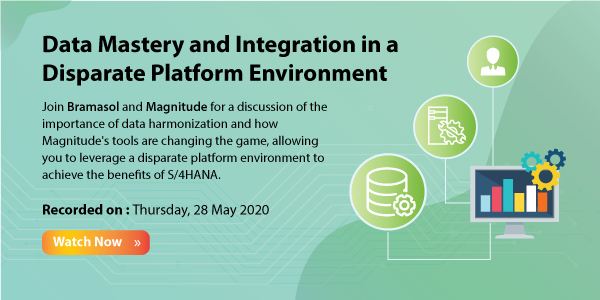SAP Central Finance (CFIN) offers an excellent pathway to jumpstart your S/4HANA journey by providing an efficient and agnostic platform for integrating visibility and financial reporting across diverse ERP landscapes. However, if the data isn't accurate and doesn't flow properly you won't achieve the results you want.

To deliver tangible results and realize the full potential value of CFIN requires proper data integration from source ERPs into Central Finance. Cutting corners in this key step can undermine the advantages of using CFIN to deliver instant access and full visibility into financial reporting, planning and results.
A well-planned Central Finance implementation process typically entails three key phases:
- Centralized financial visibility to provide analytics and reporting across the enterprise
- Consolidations and period-close centralization to include intercompany reconciliation
- Optimization of cash and credit through centralize payment processes
Phase 1 is a key starting point to achieve the goal of enhanced centralized reporting for multiple heterogeneous ERPs and other legacy systems. Data mastery in this phase must go well beyond just consolidating financial statements in order to provide actionable insights for identifying emergent issues and enabling agile management across all business entities. For example, using a consolidated view of customers can expose credit risks and enterprise-wide vendor analysis can help buyers negotiate better terms and/or discounts. Companies can analyze detailed data within Central Finance in countless ways that were not previously possible. Reporting from Central Finance is positioned as a first-phase quick win in the finance transformation journey.
Phase 2 enables companies to leverage Central Finance for streamlining enterprise-wide period-close activities, including intercompany reconciliations, eliminations and consolidations. By integrating AP and AR transactions from multiple ERPs, Central Finance can significantly improve efficiency of the intercompany close processes, with consolidation using SAP Business Planning and Consolidation (BPC) and group reporting. This not only speeds up the close process, it can also eliminate the costs and extra steps involved with using third-party legacy consolidation systems.
Phase 3 continues process centralization with deployment of Central Payments and shared services. In this scenario, each business unit may use a different ERP to pay vendors, collect and apply cash from customers, manage treasury, and so on. Central Finance can perform these processes in a single ERP, and enable organizations to create or expand shared service groups to consolidate and reduce the associated resources required. Companies can more efficiently manage cash ins and outs (especially with Leonardo and machine learning), while also reducing bank fees and employee costs.
To learn more about these key phases and to explore the details of implementation guided by a commitment to data mastery, watch an in-depth webinar on Data Mastery and Integration in a Disparate Platform Environment


